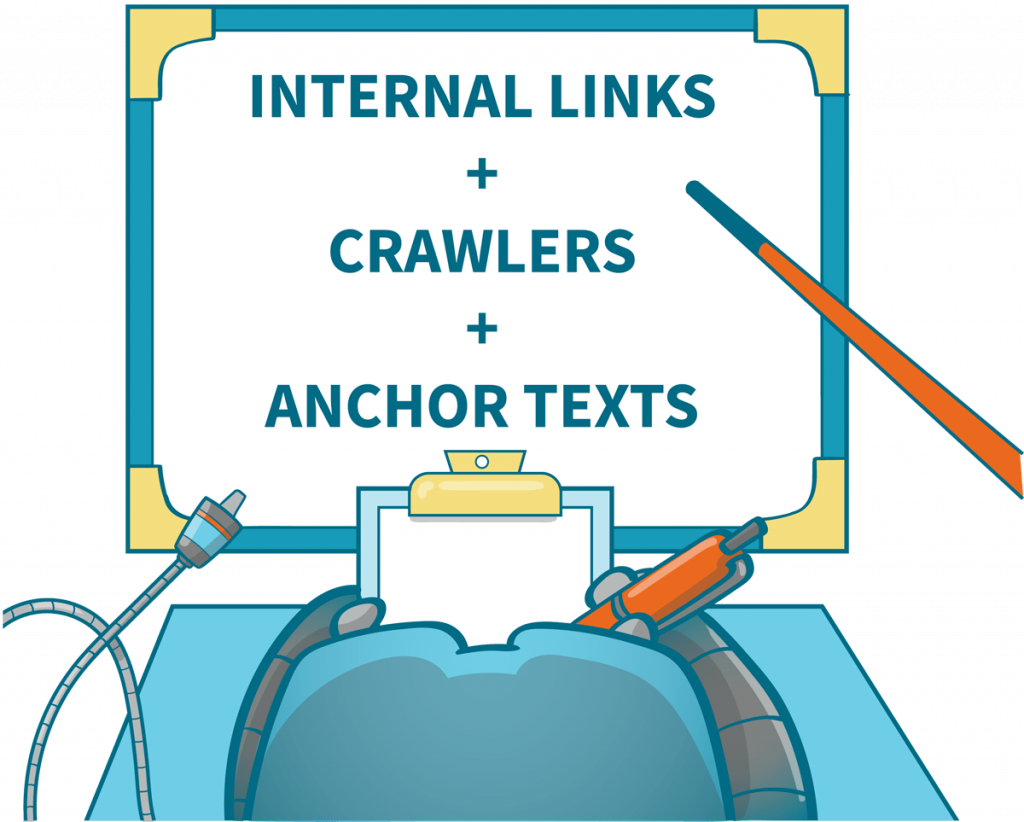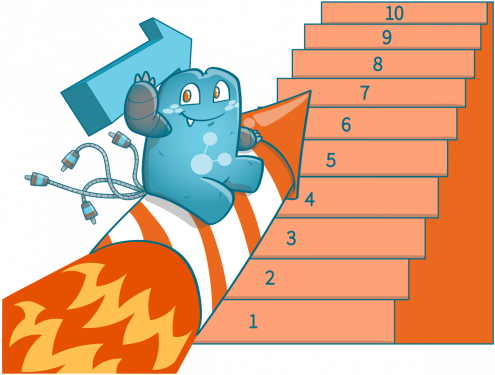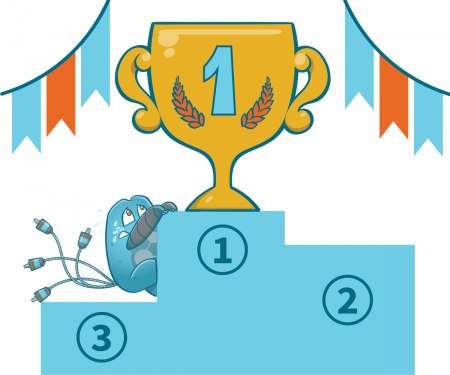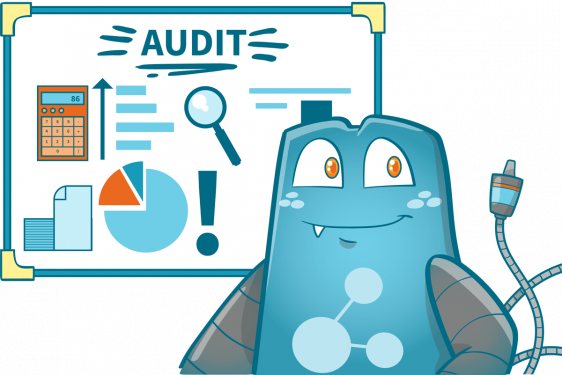How to Gain Page Authority & Stay Relevant – 12 Steps for Small Businesses

In this age of information, consumers have become keener on where they get information from. Whenever they ask search engines about something, they don’t just read the first thing that pops up. Instead, consumers try to look for the best information from a pool of websites. And, every time a website is picked as the source of information, its page authority rises. So basically, sites that appear on the top of SERPs usually have a massive chunk of authority.
Many methods on how to gain page authority have been out; however, one of the most popular is through the use of internal links.
Importance of eCommerce Internal Links to Search Engine Optimization

Understanding Crawlers
A web crawler, also known as a spider or search engine bot, is an online entity that downloads and indexes content across the internet. The primary purpose of web crawlers is to scan through every web page and interpret and learn its content. It does this so that the information collected can be retrieved when it’s needed.
They’re called “web crawlers” since crawling is the technical term for automatically accessing and obtaining data from a website. Don’t think of this in the wrong way. Try to look at it this way: imagine the crawler as someone who collects all notes on a subject for an entire year and organizes them according to a topic.
At the end of the year, if you’ve got a question about a particular topic, the crawler will then look for the answer to your question and bring out the notes that can provide you with an answer. This is how crawlers work. They will take all the information on your website, store it in a “library,” and bring out your site in the SERPs if your website has the answer to a question in the search engine.
Internal Links and Crawlers
Now, you might be asking, “what do internal eCommerce links have to do with crawlers?” Simple. Internal links help crawlers go deeper into your website and index all your web pages. The more a crawler ‘crawls’ your website, the more information it can get, and ultimately, the more it can display your website on SERPs.
To ensure that your website is crawled correctly, all your internal links should be crawlable. This is one of your top priorities so that all the information about your content will be gathered by crawlers and will be placed in the ‘virtual library.’
Anchor Texts
An anchor text is the clickable part of a link, usually different in color and underlined. These texts are where web admins attach the link to another location on a website or outside. Regardless of how it is used, optimizing anchor texts can significantly affect your website’s ranking.
These texts are essential since they give both crawlers and users an idea of what to expect on the other side of the link. Through anchor texts, crawlers will also be able to get an idea of your website’s whole structure and the keywords you’re ranking for. That is why when optimizing anchor texts, make sure to follow these steps to ensure that you get the most out of them.
- Choose meaningful text – make sure that the text you use will give crawlers and users an idea of what they should expect once they click the link.
- Avoid using naked URLs – even though it won’t create any problems, it’s not considered a good practice. So, refrain from using it as much as possible.
- Write short anchor texts – too many words will make it difficult for search engines to understand.
- Format links differently from the normal text – make sure that users quickly notice the links. Placing links that have the same format as the text surrounding it won’t make sense.
e-Commerce Internal Links as Foundation of Online Authority Building

Can You Pass Page Authority?
Yes! Page authority can be passed through links. Whenever a page links to your website, they can pass some of their page authority to the page they linked to. However, not all sites pass the same amount of authority. The amount of authority (link juice) that your eCommerce website will receive highly depends on the authority of the link source.
To understand the concept of link juice, take this example: Suppose your eCom site sells clothes for children and two sites linked to the same page on your site. Site A is Nike, and Site B is a local clothes store. Which would you value more? The one from Nike or the local clothes store? As users, you would value the one from Nike since you know its authority in this industry is way more significant.
High authority pages can have a lot of link juice to pass as compared to low authority pages. In fact, a link from a high-authority page can be worth a thousand times a link from another page.
Internal Linking for Higher Rankings
It is also possible to spread link page authority throughout your website. If one of your pages has high authority, you can share its link juice using internal linking.
Internal linking is when you include links in your content that connect to your pages with lower page authority. Unlike external linking, where you pass authority to another page on another person’s website, internal linking passes link juice between your pages.
Another purpose of internal linking is to help crawlers find your most important pages. If the bots notice that you are linking to a page too often, they will consider it as one of your most valuable pages. Plus, internal linking will help the bots navigate your whole site and map out your site structure with ease.
The bots will also be able to tell which pages you’ve linked are relevant and which aren’t. Once a search engine sees all the relevant connections you made, it is time to rank your content. The more relevant your content is, the higher your ranking will be.
Weeding Out Low-Quality Pages and Links
Before you can start enhancing the page authority and relevance of your pages, you first need to do an extensive audit. In auditing, you’ll find low-quality links, broken links, and even spot pages that shouldn’t be there in the first place.
These are the pages that need to be weeded out before you can start setting up more high-quality internal links. This way, you won’t be performing unnecessary internal linking which might take up some of your resources.
You should only allow relevant, quality web pages on your site and pick those that are going to have a positive impact on user experience and search engine optimization. This means deleting or blocking irrelevant pages from being crawled by search engines so they don’t waste their time indexing low-value content.
You also need to avoid linking back to them because this could actually hurt rankings rather than improve them! In fact, Google has said publicly that sites with massive amounts of bad links will see their SERPs suffer.
Here are what you should look out for:
- Broken Links
Broken links are those that no longer work. This mostly happens when the web page or URL has been removed, is now under maintenance, or moved to another location on the site.
These broken links will leave your visitors with unhelpful 404 errors and can prevent search engines from crawling through your content properly since their bots don’t know how to handle these errors either.
- Unlinked Pages
From the name itself, unlinked pages are web pages without internal links. This means that they are not attached to any other web pages on the site. This is very unnatural and might cause search engines to think that your website isn’t important enough for it to index.
When you do an internal link audit, look out for such unlinked pages and add at least one or two links from high-quality content on your site so these will be indexed by search engines as well. You need to consider these pages since they don’t receive organic traffic and link juice.
- Unnecessary Redirects
It is normal to redirect users to other pages of your website for valid reasons. However, if the redirect doesn’t serve a purpose then you might want to remove the redirect.
For example, if you have a page about the benefits of your product and another one with more detailed information (such as specs), then it is unnecessary to redirect users from the first link to the second.
This will only confuse visitors who might think that there’s something wrong with your website! To solve this issue, make sure to add an internal link on the explanatory page instead.
- Nofollowed Pages
Nofollowed pages are those that do not have the rel=”nofollow” tag. This means that no matter how much value your content generates, it will still be ignored by search engines.
12 Easy Steps to Gain Page Authority

- Optimizing On-Page Content
One of the easy ways to gain page authority is through quality content. If you ensure that your content is very informative and trustworthy, people will use your site as the primary source of information. If you have quality content, organic traffic will be your friend. Once you’ve established authority, your next goal is to publish more content to increase internal linking opportunities.
However, creating top-quality content isn’t the only way to optimize content. You can also include variations of the main keyword you’re ranking for, keeping all permalinks short and relevant, and optimizing title tags, image alt tags, and including a sidebar that features recent and related posts.
- Improve Internal Linking Structure
Your internal linking structure dictates how easy it is for users and crawlers to navigate your website. If your eCommerce site structure is unorganized, how do you expect users to stay and engage with your website?
Imagine a user who has burrowed deep within your blog posts and suddenly feels the need to return to the homepage where he saw content that he wants to read. But, upon scanning the current page he is on, he couldn’t find a link to the homepage. This will upset the user and may cause him to leave.
With a proper internal linking structure, a user will be able to go back to the most important pages, even if they’re already deep into your website. Plus, a good structure will also help lead users to all your essential pages, even if they started at a low-performing page.
- Remove Broken and Bad Links
From time to time, you should perform link audits to search for broken or toxic links. This will allow you to fix broken links, which may lead to poor rankings. Remember that it isn’t only broken links that you should be after; you should also search for backlinks that might be damaging your page authority.
It wouldn’t be good if a site with a bad reputation will link to your site, so if you spot one, remove the link to your site. Also, check for links in your site that link to harmful websites. You should remove it too.
- Enhance Website Performance
Poor-performing websites tend to rank lower since users don’t get engaged. When a site loads slowly, chances are, users will immediately leave the site without even seeing the content. You should also ensure that all elements are in place when the page loads.
Another way to enhance website performance is by preparing a mobile-friendly website. This way, even phone users will be able to maximize the use of your website.
- Implement Marketing Strategies
Increasing your online presence is an excellent way to build page authority. In recent years, the use of social media platforms has become more prevalent in advertising eCommerce websites. To get more customers, try using the power of social media to increase visibility.
- Prioritize Navigation Issues
Once you’ve found the issues with broken links and pages, you can’t start enhancing page authority immediately. You still need to fix the navigation issues. Remember, you need to do the first step so that you won’t end up twice the workload.
The reason behind this is that if you already have removed the broken pages, you won’t have to fix the navigation issues associated with them.
So, what are navigation issues?
Basically, when identifying navigation issues, you have to answer a couple of questions like:
- Are all your pages easy to reach?
- How many clicks does it take for a user to reach important pages?
- What is your internal linking structure and is it organized?
- Does the search function of your website work?
- Do internal links lead users to the intended pages?
These are only some of the questions you need to ask yourself when looking for navigation issues.
- Importance of Prioritizing Navigation Issues
It is important for you to prioritize navigation issues you’ve found on your website since these are among the most common reasons why search engines and users lose trust in your website.
If it takes too long for them to crawl and index important pages, you’ll end up with a high bounce rate because users won’t be able to find what they’re looking for on your site. One of the goals of fixing navigation issues is to make people find what they are looking for and stay there as much as possible!
This means that if a user can’t find what he’s looking for after going through multiple pages, then this will hurt conversion rates down the road.
By fixing navigation issues before anything else, you give yourself more room when it comes to internal linking which actually helps build authority by increasing page relevancy over time. In other words: make sure people can easily find what they are looking for on your site, and you’ll be able to build up a reputation through quality internal linking.
- Enhance Page Authority using Internal Linking Strategies
After fixing navigation issues, the next step is actually making use of effective internal linking strategies that will help provide high-quality content with more relevancy.
This way, search engines won’t have a hard time crawling your pages because when users click links within your website (internal), it means there’s something valuable about them.
The only downside here is that not every page has an equal value which makes prioritizing even more important! For example, blog posts should have more page authority than a staff page, right?
If you’ve made the decision to invest in internal linking strategies on your website, then this is how it should be done:
For each relevant topic or keyword that appears multiple times on your site, create at least one internal link. For example: if I wanted to rank for “SEO tips”, I would first look for all of my blog posts and resources related to SEO so that they can have as many backlinks pointing towards them as possible.
Let’s say there are 20 different pages where I use this term, I would only target the ones with the most links (e.g., guest post) since these will help build up their relevance more quickly which means Google trusts me more and my pages rank higher.
The more links you have pointing towards a page, the faster it will gain relevancy which means that after some time, Google might even think that your blog posts are an authority on this topic. For example: if I’m targeting “SEO tips”, then all of my blog posts would be seen as authorities since they’ll attract so many backlinks over time!
- Start Looking for Internal Linking Opportunities
Looking for internal linking opportunities is not that hard if you know what to look for.
Your main goal here is to find pages on your site with the same topic, keyword, or set of keywords which means they are relevant enough in order to link them together via internal links. After some time, Google will see these connections between similar topics and rank these pages higher since they are all relevant to the same topic.
For example, if I wanted to rank for “SEO tips”, then I would first look at my most popular blog posts which are related to this term, and link them together via internal links in order to create more relevance over time.
- Start Your Internal Link-Building Efforts
Once you’ve prepared your website for internal linking. There’s nothing left but to start the internal linking process. Your goal here is to create as many relevant links between all of your pages in order to help them become more relevant.
- Keep Internal Linking Relevant
We’ve mentioned earlier how important it is to keep links relevant so search engine bots can easily crawl through them without getting confused. And since users usually click on the first few results displayed in SERPs, why not give them what they want immediately? This way, there’s less chance for frustration when browsing through your pages.
- Lastly, Keep on Improving Your Strategies
Internal link strategies might seem complicated at first since there’s so much information out there that can confuse even the most experienced website owners. The key is to start small and build up your strategies over time so that you can constantly improve them while also seeing results in terms of higher search engine rankings.
Remember: there’s no such thing as a perfect strategy and the only way to get better is by learning from past mistakes and constantly improving your strategies.
To start with your internal link-building efforts, you’d need an excellent internal link-building tool to aid your efforts. Visit Internal Link Juicer today.
Internal Linking Shouldn’t Be Exclusively Used for SEO Purposes
Internal linking isn’t just important because it can increase site authority and relevance but also due to its ability in improving user experience. This means allowing relevant pages on your site which are related or similar in nature so people won’t be confused by what they encounter while browsing through different sections of your website.
To make internal linking easier, check out Internal Link Juicer and view if our premium offers suit your needs!






